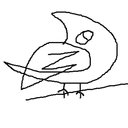[Treatment strategy and microsurgical operation of complex cerebral arteriovenous malformations].
キーワード
概要
OBJECTIVE
To study the treatment strategies and operative principles of complex cerebral arteriovenous malformation (CAVM).
METHODS
Total 27 cases of complex CAVM were microsurgically resected from June 2004 to May 2011. These account for 67.5% of CAVMs in the same time. Of the CAVM, 25 were eloquent CAVMs and 2 were non-eloquent CAVM. Among the 27 cases, the size of CAVM was large in 12 cases, median in 8, and small in 7. According to Spetzler-Martin CAVM grading, 8 cases were grade II, 5 cases were grade III, 9 cases were grade IV, and 5 cases were grade V. Pre-operative endovascular embolizations were carried out in 2 large CAVMs. All CAVMs were resected by microsurgical techniques.
RESULTS
There were 23 cases of complex CAVMs totally removed. The total resection rate was 85.2%. The residual CAVMs were found in postoperative digital subtraction angiography (DSA) in 4 cases. Three of these residual cases were treated with gamma knife. Nineteen cases recovered very well after operation. The main complications were hemianopsia in 2 cases, moderate weakness in 4 cases. Two patients in coma before operation were still comatose after operation. The follow-up period were 2 months to 6 years. Twenty-two cases were Glasgow outcome scale (GOS) 5, 3 cases were GOS 4, and 2 comatose patients were improved a little during the follow-up.
CONCLUSIONS
The microsurgical total resection of the CAVMs is the most effective method to cure the disease. With the use of microsurgical technique skillfully, mose complex CAVMs can achieve good outcomes. Preoperative embolization and radiosurgery on the residual nidus are good supplementary methods to treat the complex CAVMs.


